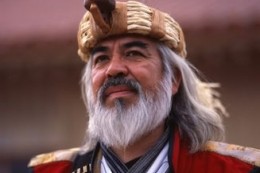Finally, after 140 years, the government of Japan lifted the ban that resulted in the extinction of the Ainu language and marginalization of Ainu people. Japan banned the Ainu language in the 19th century, outlawed their practices and seized their land. So bad was the discrimination that may Ainu’s were ashamed of their cultural heritage and often hid their backgrounds from other people. This meant that they did not even want to speak the language in public and they grew up ignorant of their culture. The result of this was that the language is almost extinct. 24,000 people identify themselves as Ainu but only about 15 families in north Japanese Island of Hokkaido can actually speak the language. Most of the other Ainu’s speak Japanese. The figure for Ainu descendants is thought to be much higher but most people still deny their heritage out of fear of discrimination or they are unaware of it.
Ainu is an isolated language as it is not related to any other language. The different dialects were not mutually intellible. Currently, the Tshima dialect is the only surviving dialect. The last Sakhalin Ainu speaker died in 1994. The study of the language is largely based on historical research due to the few number of people who speak it. The language did not have it’s own script, which made it hard to preserve it. It mainly relied on narration to pass down stories from generation to generation. For pronunciation purposes, Ainu is now written using Japanese katakana syllabary. Latin alphabets are also used.
Several measures have been taken to revive the language. This includes classes being offered by some of the remaining speakers. This has resulted in a number of individuals speaking Ainu as a second language. Efforts to improve the language are bearing fruit, especially with the introduction of Ainu-Japanese dictionaries. There are also local program in broadcasts on radio in Hokkaido. Ainu times is the only newspaper that is published in Ainu language. It was first published in 1997. It uses the Roman and Katakana scripts.
